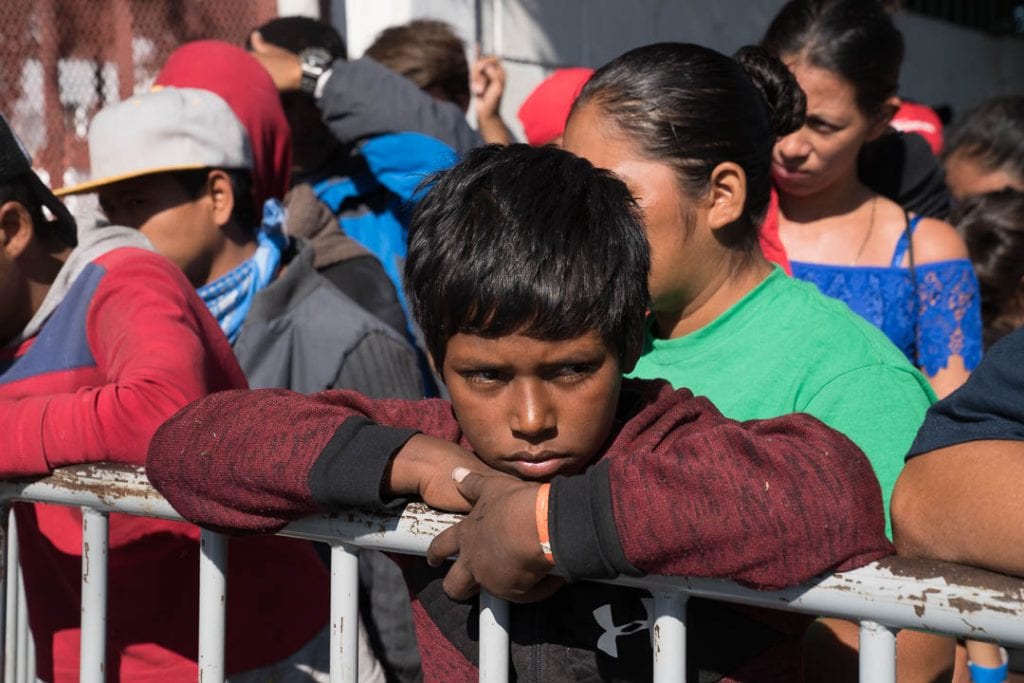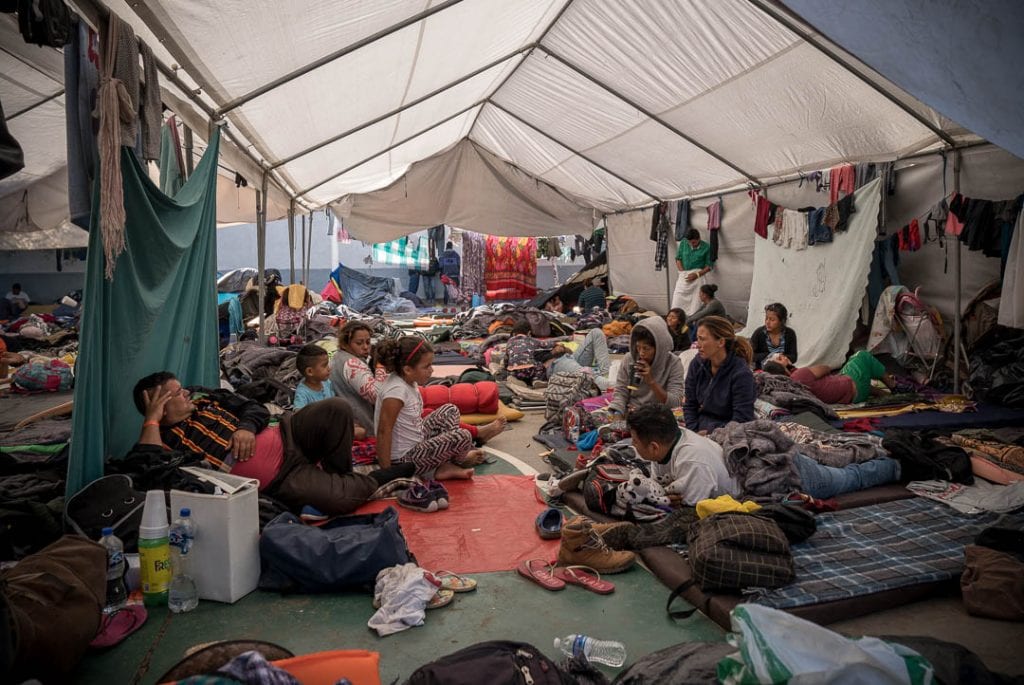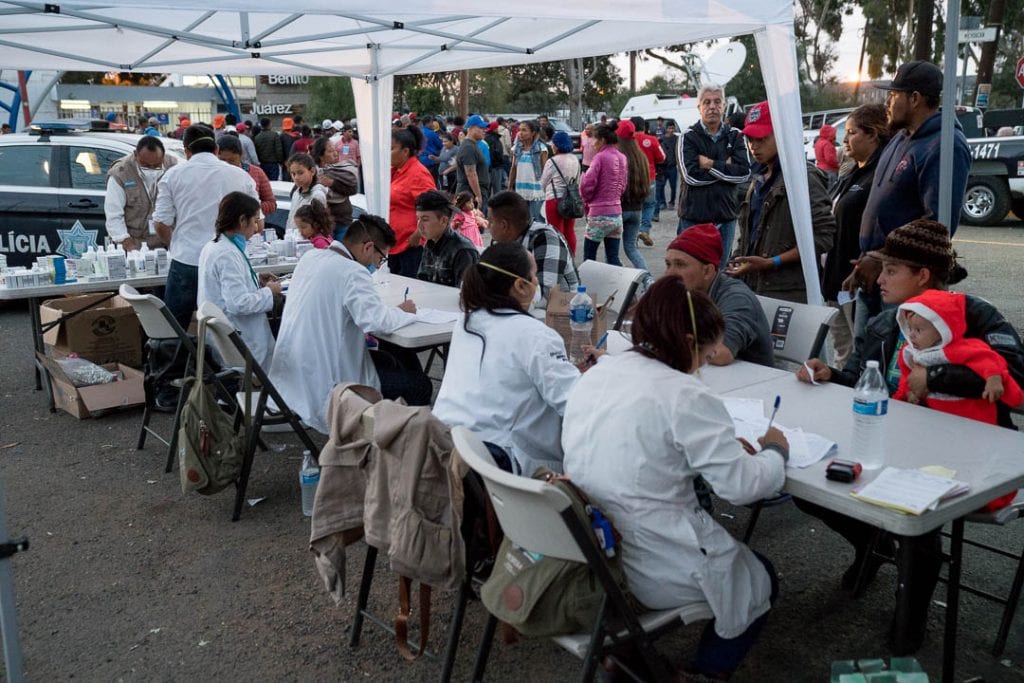What’s Happening at the Tijuana Migrant Camp
By Ken Alexander*

HAVANA TIMES – It is 7 am and the Tijuana, Mexico migrant camp of around 2,000 persons is just awakening.
There is no food this morning. There is a steady stream of migrants walking back to camp with coffee. I ask a Honduran man if there was dinner last night. He tells me, “No food yesterday. Nothing this morning.”
Although some migrants arrived earlier, the bulk of the Hondurans arrived just five days ago. The camp is in Zona Norte, on the north end of Tijuana, in a sports facility. The early arrivals were lucky to get floor space inside of the gymnasium where is it dry, safe and quiet.
The more recent arrivals are camped in the soccer field, under the stadium bleachers and along the chain link fences where they can construct simple lean-tos using blankets. Some families have high-tech tents, while others have only cardboard and donated blankets. Every square inch of space along the wall and fence is occupied.
The temperature at night drops to 10 C / 50 F. During the day it is a comfortable 23/75. Open showers are set up along the outer perimeter of the soccer field next to the outhouses. Drinking water is available near the gym. The camp is functioning, if barely.

Despite the squalor there is an unusual sense of intention and hope; that this is just part of the journey and not the end point. The daily routine of life continues as clothes are washed, bedding is organized, phones are charged, babies are nursed, and children play games. This has been their life for many weeks and there is an odd sense of normalcy that is very striking.
There is safety in the camp. All roads leading to the soccer field have been barricaded. Mothers and children inside the barricades are safe. Police are everywhere. Outsiders are not allowed inside the fence except at designated times.
I hear the stories being told by the Honduran migrants. About how their families were murdered, or how their husbands were shot in front of them or how they were threatened on a daily basis. Here in Tijuana they are cold and hungry; but they are safe. They do not know what their future will be, but today they know that inside this encampment their lives are not being threatened.
At 9 am the media is allowed in for one hour. Inside the camp the video crews set up and the news people prepare for their live feeds with the migrants as back drops. Well-dressed men and women with microphones in hand give their sound bite analysis of the situation while repeating the unsubstantiated rumors that there are hundreds of criminals in these camps. They pack up and leave while many independent journalists stay to seek out the deeper real story of tragedy and hope.

By 11 am the medical teams have set up long tables with teams of government doctors providing medications. As I walk around the camp there is the pervasive sound of coughing. Aid workers wear masks. It is my third day and my own cough is starting to develop.
As darkness falls and I start to leave the camp, a truck with food arrives. In the back of the truck are large pots of chicken, rice and stacks of tortillas. Hundreds of hungry people run towards the truck. I expect a mob scene; complete chaos.
However, to my surprise, everyone lines up very orderly. Women are in one line, the men in the other. When one person creates a problem, the group self-polices itself. This is a group of people who are traveling as a unit and there are rules. I am in awe.

Plates are served and passed over the fence, alternating between lines but with the women often getting more so they can feed their children. This means that 200 people will not go to bed hungry. But this camp has 2,000 people and thousands more are in Mexicali just 3 hours away trying to make their way to Tijuana.
In the coming days the order and relative calm that I observed on this day will be greatly strained. The confrontations from the locals will continue and the resources will be strained beyond capacity. There are a reported 8,000 asylum seekers in route throughout Mexico, most of who are trying to make their way to Tijuana – the largest border town in the world.
I know things will change dramatically in the coming days. And not for the better.
—–
*Ken Alexander is a freelance photographer and journalist from Woods Hole, MA, USA. He can be reached at [email protected].
We also recommend: Seeking Asylum at the US-Mexican Border
Click on the thumbnails below to view all the photos in this gallery. On your PC or laptop, you can use the directional arrows on the keyboard to move within the gallery. On cell phones use the keys on the screen.






























This report is different than the cold numbers and typical news we get from other media. You can feel the human drama that so many people are living and that is very important. Thanks, Ken